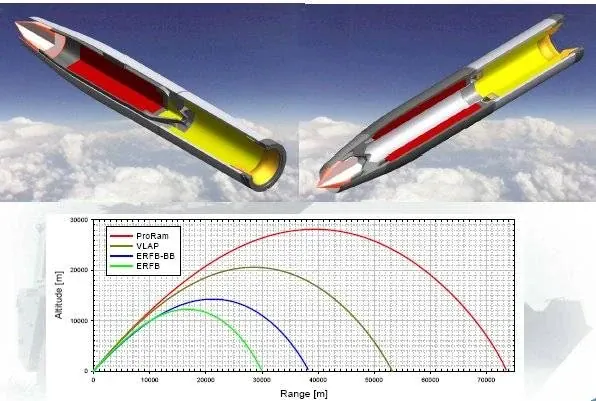American defense giant Boeing and Norway-based Nammo have jointly developed and tested a next-generation guided artillery round—designated the “Ramjet 155″—for use in long-range precision strikes.
The system, developed under contract with the US Army, features a solid-fuel air-breathing ramjet engine, enabling it to reach targets at distances previously out of reach for conventional artillery systems.
According to ArmyInform and Ukrainian defense analysts cited by Defense Express, the project has been in development since 2018 as part of the US Army’s Extended Range Artillery Munition Suite (ERAMS) initiative.
In 2019, Boeing’s industry team received an initial contract under the Advanced Technology Suite Artillery Munition Suite (ATSAMS) program, followed by a second-phase R&D contract in 2020.
What is “Nammo”? The Ramjet 155, also known by Nammo as the IM HE-ExR (Insensitive Munition – High Explosive – Extreme Range), is designed to be compatible with NATO-standard 155mm artillery systems, including barrel lengths L39, L52, and L58.

Design and flight profile of the Ramjet 155 long-range artillery shell. (Source: Nammo)
Equipped with an integrated guidance system and a ramjet propulsion unit that activates after firing, the projectile is capable of sustaining high velocity across extreme distances—up to 150 kilometers, according to Army Recognition, which reviewed the system during the 2025 FEINDEF defense exposition in Madrid.
Nammo’s visualizations from FEINDEF illustrated potential use scenarios across the northern operational theater, including parts of Lapland, northern Finland, and the border areas with Russia.
A simulated strike map showcased the shell’s capacity to deliver precision fire at a 90-kilometer range and engage mobile targets across land and sea, with targeting data potentially provided by platforms such as the F-35.
The round features a front air intake housing a spindle-shaped central body for airflow, deployable stabilizing fins, and an aft nozzle for propulsion. Unlike traditional rocket-assisted artillery, Ramjet 155 operates with a full-scale air-breathing engine, offering extended thrust duration and increased range without sacrificing compatibility with standard artillery launch platforms.
Despite its unique configuration, the projectile incorporates a guidance system, control surfaces, and a warhead. While the size of the explosive payload may be smaller than conventional artillery shells, its guided accuracy is expected to offset this trade-off, enabling precision strikes at stand-off distances while minimizing exposure to counter-battery fire.
Test firings have already been conducted at the Andøya range in Norway, demonstrating the shell’s aerodynamic and propulsion performance. According to Boeing, the Ramjet 155 represents a key element in expanding the Army’s future long-range fires capability.
Other companies are also participating in the ERAMS program. Raytheon, BAE Systems, and the Netherlands-based research organization TNO are jointly developing the XM1155-SC—an alternative high-speed sub-caliber guided round. Trials for that munition are expected later this year.
Both projects reflect growing interest in extending the reach and precision of conventional artillery, as armed forces seek new ways to engage targets at distance while reducing vulnerability on the modern battlefield.
Earlier, the Pentagon set a goal of producing 100,000 155mm artillery shells per month by October 2025, but current output remains at 40,000, according to Defense One. Despite delays, US factories have tripled production since 2022, with further expansion underway to meet rising demand driven by the war in Ukraine.
Related articles
